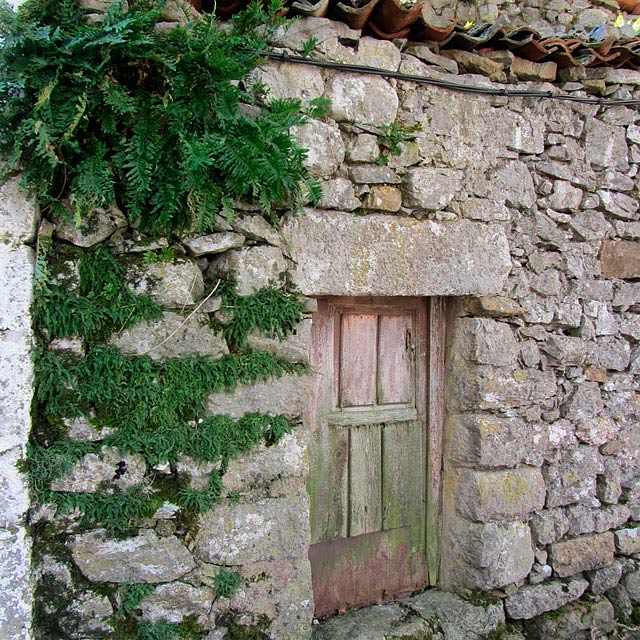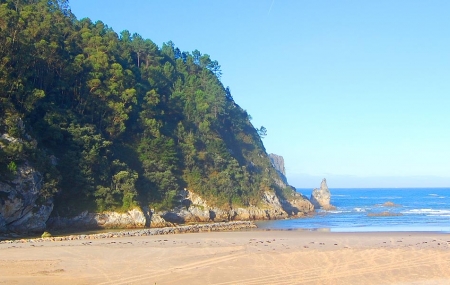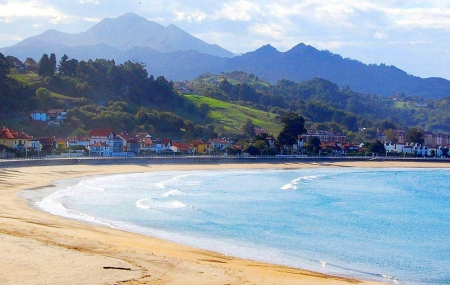Sierra del Sueve, Asturias
Two hikes and an ancient horse of the North
The far north of Spain holds a secret delight: a geological fancy, a small range of hills and green valleys within clear sight of the sea and Asturias beaches, the kind of place that aches to be walked by ramblers.
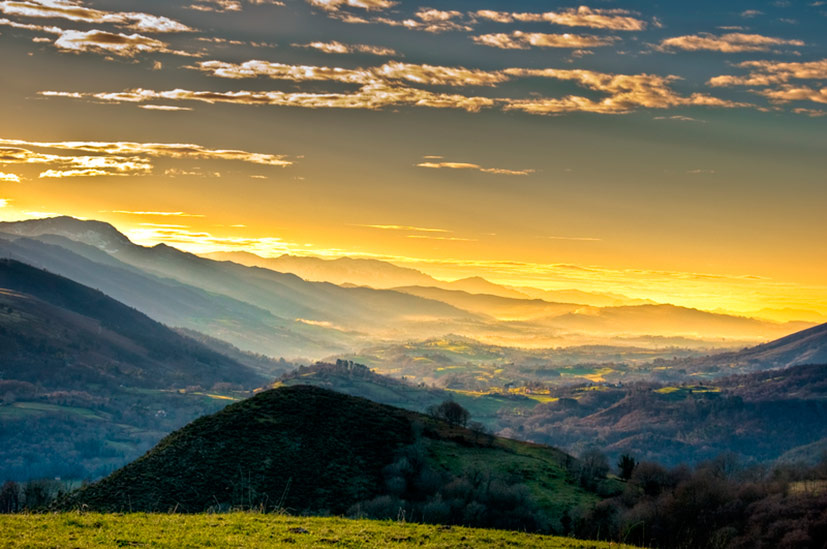
It’s the Sierra del Sueve, a pocket-size gem of mountainous green in eastern Asturias, whose 30 square miles invite to rambling discovery. It also hides an equine treasure which you are sure to see.
La Sierra del Sueve, south-east of the chaming seaside town of Gijón, is unknown to most visitors to Asturias who generally head directly for the spectacular Picos de Europa.

This is Picos de Europa seen from the Sierra del Sueve
What they miss out on is a self-contained natural environment that still has patches of Europe’s original forest, holly, ash and beech woods, birch and almond, mingling together with the most significant concentration of ancient yews in this part of the continent, thousand upon thousand of the tree which once gave shelter to long-gone druids.
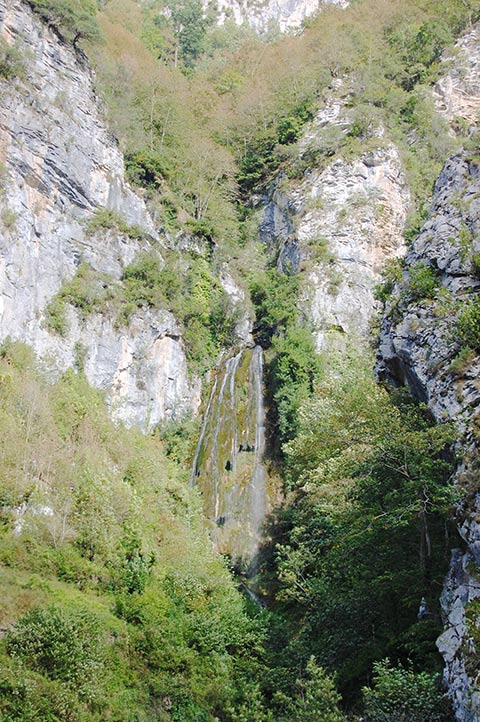
A mild microclimate obtains here thanks to the proximity to the coast, which also brings sea mists rolling in to cloak and swirl around this magical little world linked by meandering pathways. Limestone outcrops rise above a gentle, peaceful, yet still wild landscape populated by few people but many other animals, including a very special one.
Sueve is the home and last refuge of the asturcón, one of the world’s oldest horses, a muscular and agile animal just four feet high, whose dark wild herds blend into a dark green landscape.
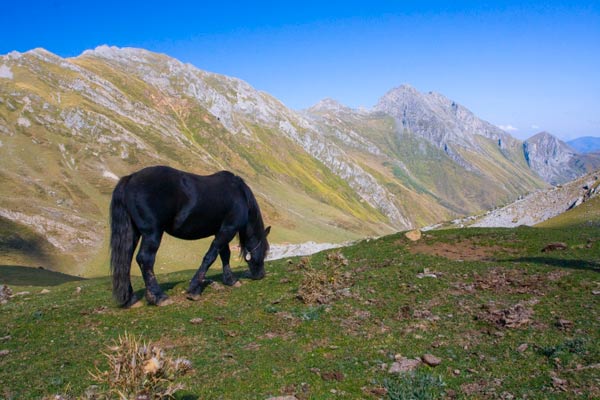
They typically bear a star or badge of white on their brow and their hooves are white, also. The small but sturdy asturcones were once used by the Romans to work mines. Today they are a protected, semi-domesticated species and you almost certain to go by them on your hike.
This is also the only place in Asturias where you will find fallow deer, introduced in the 1960s and now paradoxically overpopulating and subject to selective hunting to keep numbers stable. Foxes, badgers and wild boar share the same area with birds of prey such as the Egyptian Vulture.
The area belongs to the Colunga county of Asturias. Visitors staying in the Piloña area will find it on their doorstep.
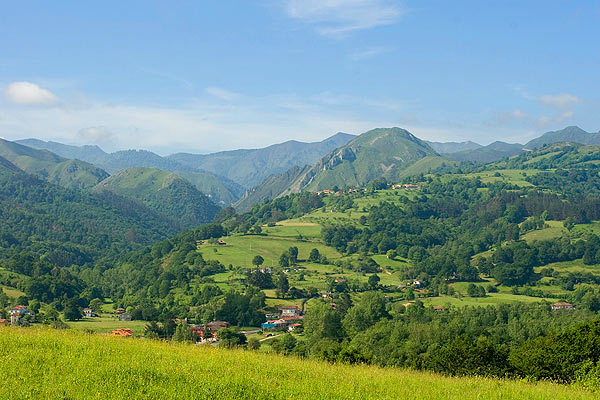
One way into La Sierra del Sueve is along the AS-260, starting from Arriondas (on the interior N-634), or just east of Colunga (on the coastal N-632) between Gijón and Ribadesella.
There is an Orientation Centre (with maps and information in Spanish) in the village of Gobiendes on the northern verge of the Sierra, where you are firmly ensconced in Asturias Cider Country.
The highest point of Picu Pienzo, which rises 1,159 metres over a very short distance of 5 km from the sea, rewards the hiker with a double view of the ocean to the north and the mountains of the Picos de Europa to the south.
Hike 1
Along the AS-260 you will come to El Fitu look-out point (Mirador del Fitu, you can see the view from here on the photo below). From El Fitu a well-defined path will lead you up Picu Pienzu.
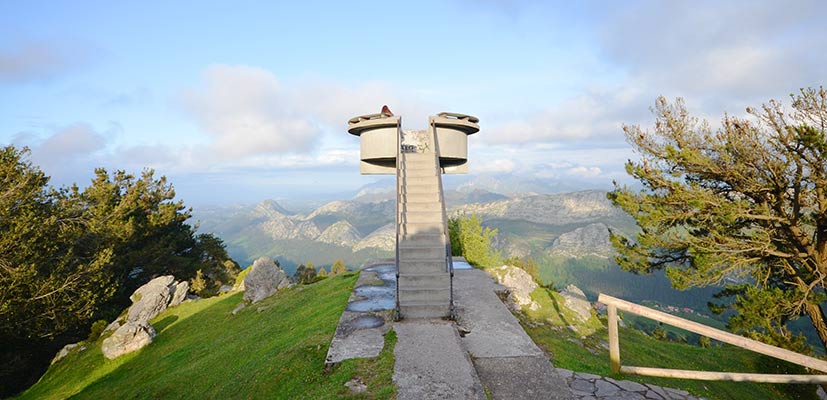
The last stretch up to the peak is more demanding but well worth the effort.
Allow 5 hours for there and back for the hike.
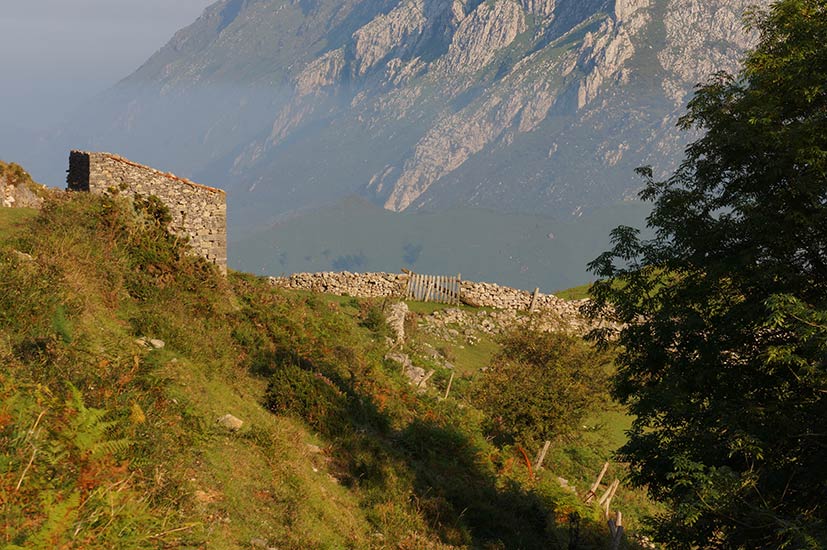
An alternative approach is from the west, along the AS-259 between Colunga and Villamayor on the N-634 east of Piloña. If you stop at Alto la Llama (Llama Pass) a beautiful hike takes you up through Sierra del Sueve as far as the area called Majada de Espineres, famous for the annual Asturcón Fiesta held on the last Saturday of August, where pure-bred asturcones are branded.
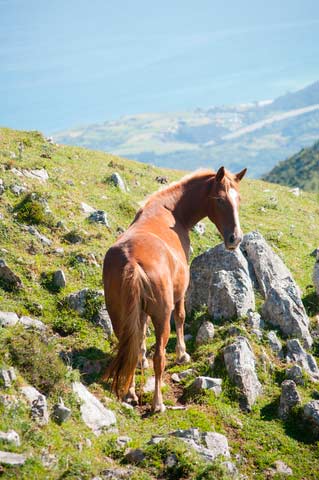
Hike 2
From the same starting point of Mirador del Fitu, walk up the steep track that is wide enough for a 4x4. It soon levels out to take you through oak and chestnut groves, where you will also see holly and yew. Birch trees then take over and the hillside is covered with heather and gorse.
You are treated to a panorama extending to the sea, dotted with villages and isolated farmstead, as well as large eucalyptus plantations. And there are more amazing views to come, including the vast tectonic depression between Sueve and the city of Oviedo.
Occasionally, signposted shortcuts may tempt you off the main path, but it’s best to keep to it. You will come to a pass (Alto de la Cruz) and from there onwards the landscape changes to rolling meadows and thickets. In autumn and winter especially, you will come across abundant birdlife, bands of redwings flitting overhead, also chaffinches, bullfinches, Eurasian siskins, vultures and buzzards. Birdsong is joined by frogs and toads which inhabit water ditches.
Soon after, you come to the area known as Majada de Espineres. There are various well-preserved cabins and a shady spot by a fountain: just the place to enjoy a picnic and watch the horses graze. The hike of 8 km takes between 1½ and 2 hours.
